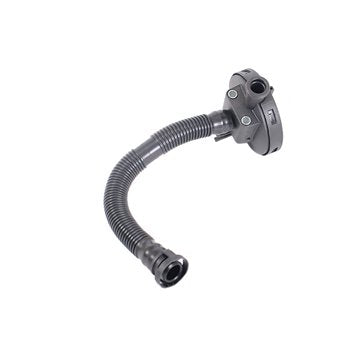Optimize fuel efficiency with a top-tier clp engine.
Optimize fuel efficiency with a top-tier clp engine.
Blog Article
How a Clp Engine Can Boost Performance in Various Industries
The advent of CLP engines notes a significant change in operational performance across different sectors, driven by their capability to optimize gas consumption and lessen downtime. Industries such as manufacturing and logistics stand to get considerably from their robust layout and consistent power output, which assure to streamline operations and boost productivity. As companies significantly prioritize sustainability along with efficiency, the duty of CLP engines ends up being also more essential. What remains to be seen is exactly how these advancements will form the future landscape of commercial operations and their effect on wider economic trends (clp engine).
Introduction of CLP Engines
CLP engines, or Continuous Liquid Propellant engines, stand for a substantial innovation in propulsion innovation, especially for space applications. These engines utilize a continual feed system that enables for the sustained expulsion of propellant, resulting in enhanced performance and performance compared to typical solid or hybrid propulsion systems. By maintaining a consistent circulation of fluid propellant, CLP engines can accomplish much more precise drive control, which is important for maneuvering spacecraft in numerous objective scenarios.
The layout of CLP engines integrates innovative materials and cutting-edge fuel management systems. clp engine. This leads to reduced weight and raised dependability, important factors for long-duration room goals. Moreover, the continuous procedure minimizes the danger of burning instability, a typical obstacle in standard rocket engines.

Advantages in Production
The production of Continuous Liquid Propellant (CLP) engines offers several notable benefits that boost both performance and cost-effectiveness. Among the main benefits is the streamlined manufacturing procedure, which minimizes the complexity connected with conventional propulsion systems. By using liquid propellant, manufacturers can achieve better accuracy in engine performance, resulting in optimized power outcome and decreased waste.
Furthermore, CLP engines help with a greater level of modularity, enabling simpler integration right into different manufacturing lines. This flexibility can significantly lower preparations and enhance general operational flexibility. Using CLP technology additionally has a tendency to reduce the need for substantial maintenance due to less moving parts, which converts into minimized downtime and functional prices.

Applications in Logistics
Leveraging Continuous Liquid Propellant (CLP) engines in logistics offers significant advantages in operational efficiency and dependability. These engines offer a durable remedy published here for numerous transport demands, enabling the smooth movement of items across huge ranges. The intrinsic style of CLP engines permits constant power output, which translates into smoother and extra foreseeable transport timetables.
Among the crucial applications of CLP engines in logistics is in heavy-duty products transportation, where they can drive both ground and aerial cars. Their ability to keep high efficiency under varying tons problems makes certain that distribution timelines are satisfied, thus enhancing consumer satisfaction. In addition, CLP my response engines can be integrated into automated logistics systems, assisting in real-time tracking and optimizing course planning.
Moreover, the resilience of CLP engines lowers upkeep downtime, allowing logistics firms to maximize their functional capacities. This is especially advantageous in warehousing procedures, where effectiveness in handling and delivering products is critical. As logistics remains to evolve, the assimilation of CLP engines represents a forward-thinking technique that not only boosts performance yet also sustains the industry's expanding needs for dependability and rate.
Effect on Energy Efficiency
Exactly How do Continuous Liquid Propellant (CLP) engines boost energy effectiveness in transport? CLP engines utilize a constant circulation of liquid fuel, maximizing combustion processes and maintaining a steady drive output. This style lessens power losses related to typical burning engines, where gas delivery can vary and cause inefficiencies.
The constant procedure of CLP engines enables a more efficient thermal cycle, leading to greater details impulse contrasted to standard engines. clp engine. This translates to decreased fuel usage for the very same quantity of job done, significantly reducing operational expenses across different transportation sectors, consisting of aeronautics and maritime sectors
In addition, the ability of CLP engines to maintain optimal efficiency under varying link tons conditions minimizes the requirement for regular velocity and slowdown, additionally improving gas effectiveness. Enhanced power performance not just adds to set you back savings however likewise results in reduce greenhouse gas discharges, lining up with global sustainability goals.
Future Trends and Innovations
Arising improvements in Continuous Fluid Propellant (CLP) engine modern technology promise to change the landscape of transportation efficiency and sustainability. As industries pivot towards greener options, CLP engines stand at the forefront, incorporating innovative products and design methods that boost efficiency while decreasing ecological impact.
Among the most encouraging trends is the fostering of hybrid systems that combine CLP engines with renewable resource resources. This synergy can maximize gas usage and reduce emissions, straightening with international sustainability goals. Furthermore, advancements in computational liquid characteristics (CFD) are helping with the design of more aerodynamically effective engines, resulting in decreased drag and enhanced gas effectiveness.
Moreover, the development of smart surveillance systems is set to boost operational efficiencies. These systems utilize data analytics and IoT innovation to optimize engine performance in real-time, guaranteeing that the engines run within their most efficient parameters.
As research proceeds to check out different propellant formulations-- such as biofuels and artificial fuels-- the future of CLP engines looks promising. By harnessing these developments, sectors can not only improve their efficiency but likewise contribute substantially to a cleaner, a lot more sustainable future in transport.
Verdict
In conclusion, CLP engines stand for a substantial improvement in efficiency throughout several sectors. The assimilation of sophisticated products and fewer moving components reduces upkeep requirements, while positioning with sustainability goals placements CLP engines as a pivotal innovation for the future.
Report this page